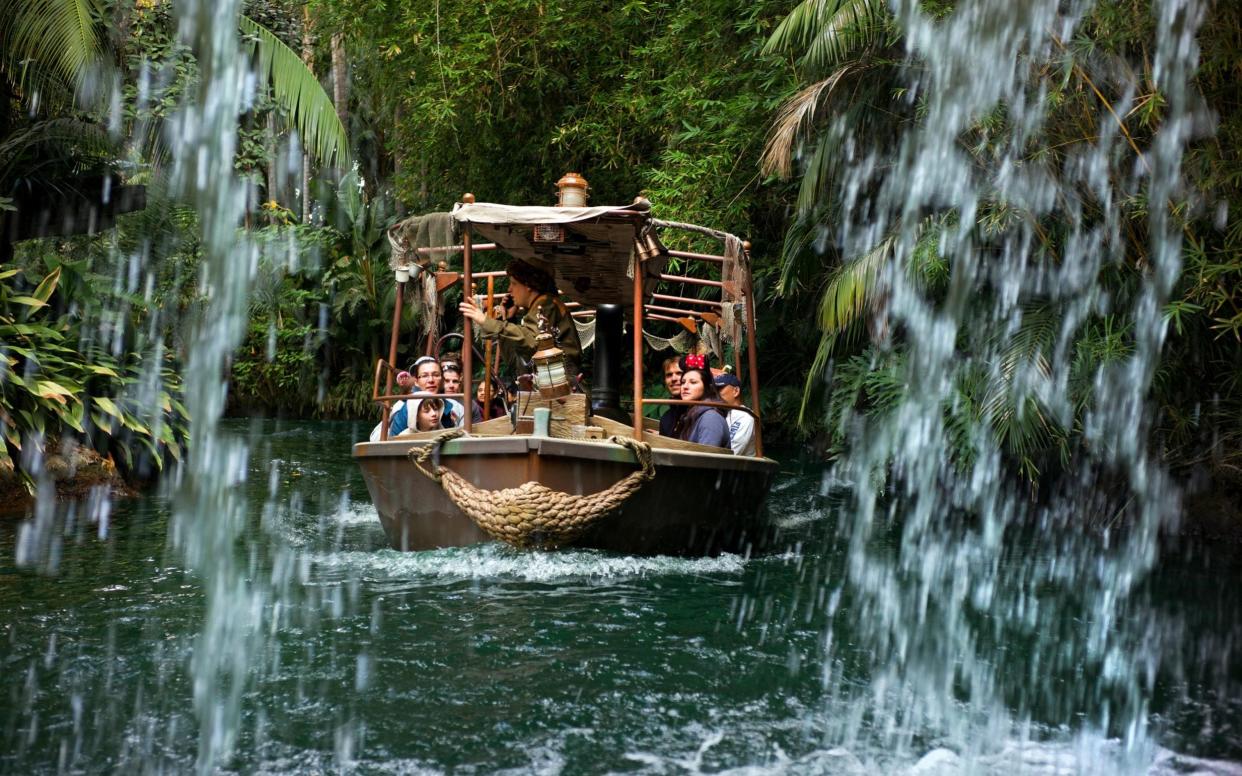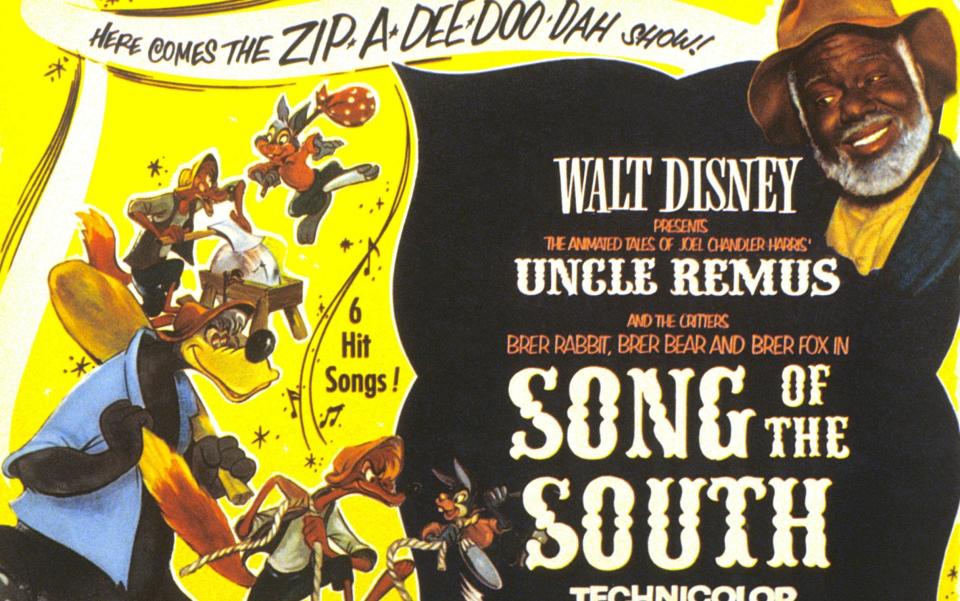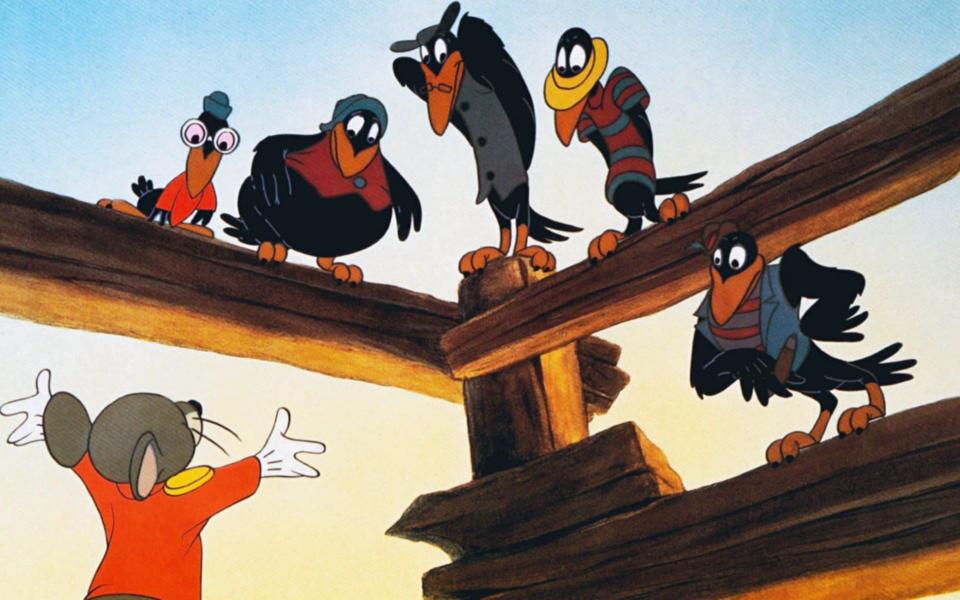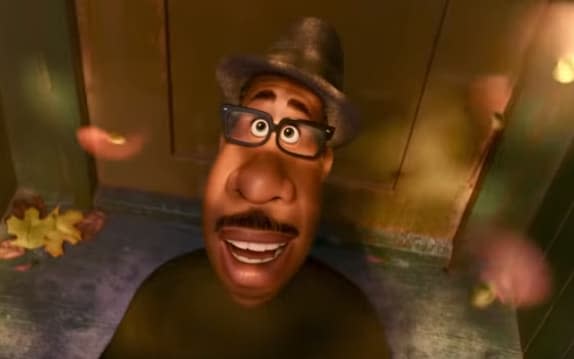A Jungle Cruise to nowhere? Why Disney’s war on its ‘racist’ past will never end

As the jungle cruiser rounds the bend, the guide struggles to contain himself. “Okay folks,” he says. “This right here is why you never argue with a rhino.”
On the shoreline, a hydraulic pachyderm is waggling its horn at a group of dark-skinned safari “guides” wearing fez-type red hats and wriggling up a tree. The crowd yells in appreciation. From there they proceed to the “headhunter” segment of the journey, featuring animatronic figures in “tribal” gear, hooting and waving spears. One proffers a severed head.
These are two of the highlights of the Jungle Cruise attraction at Disneyland in Los Angeles to be overhauled by Disney as it continues to address – or at least try to address – its decades-long legacy of racism.
As part of that campaign, the Magic Kingdom this week announced plans to “update” the Jungle Cruise at Disneyland (currently shuttered, along with the rest of the park, due to Covid restrictions). The attraction opened at Disneyland in 1955 – loosely based on John Huston’s The African Queen – and is a favourite of hardcore Disney fans. Queue times can be up to two hours on busy days. It has even inspired a forthcoming Dwayne Johnson/Emily Blunt film.
But the Jungle Cruise has also drawn criticism over its portrayal of African people wielding spears and resembling 19th century racist caricatures. “The Jungle Cruise has always had more than a whiff of 'Great White Hunter' in its depictions of the local natives,” Len Testa, co-author of The Unofficial Guide to Walt Disney World told Marketwatch.
“The audio that plays for guests standing in line might as well be called ‘British Colonialism’s Greatest Hits.” (This audio loop includes Song of India by Paul Whiteman and The King's Horses (And the King’s Men) by Jack Hylton and his Orchestra).
“For many people of colour who rode the Jungle Cruise, this section of the attraction was awkward and uncomfortable,” says Chris Wakefield, a bi-racial journalist and Disney fan who hosts theme park podcast, The Wakefield Report.
“I see this as yet another step Disney is taking to atone for previous incidents. I’m not sure if you’d call it racism or just insensitivity, but I’ll chalk it up as a win, if they are looking to rectify it.”
A family theme park might seem an unlikely hot bed for prejudice. But Disney’s parks have generated controversy previously. Last year, it announced it would be redesigning Splash Mountain. The attraction currently features music from the infamous 1946 film Song of the South, long accused of glorifying slavery and of depicting black people in the segregated Southern United States as happy with their lot.
Changes have already been made to the Pirates of the Caribbean ride, where pirates were previously depicted auctioning off women. And to the Hall of Presidents, which has been amended to include a discussion of slavery.

“Outdated depictions shouldn't be upheld simply in the name of nostalgia,” says theme park journalist Carlye Wisel. “Disney continuing the updates they've done to Pirates of the Caribbean and recently announced for Splash Mountain with changes to Jungle Cruise is a fantastic decision.”
Connected to this are claims Disney isn’t doing enough to address the issue of diversity within its theme park design teams. The “Imagineers” who create new rides and attractions are overwhelmingly white; critics accuse the company of failing to acknowledge the importance of diversity. Disney responded by recently forming a Diversity and Values team. But commentators have warned the company not to simply pay lip service.
“It is a great start. But I would caution Disney to not fall into some of the same traps as other organisations, where an inclusion director is hired and the organisation thinks that has solved the problem,” Chris Wakefield told Orlando Weekly. “Creating a diversity and inclusion team is like hiring a doctor to find out if you have cancer. It doesn't cure cancer; you are just finding out where it is and how easy it is to treat or cure.”
Yet theme parks are just the beginning of the challenge Disney faces as it seeks to address a legacy of racism that stretches back to the company’s founding in 1923. There is no suggestion Walt Disney was himself a racist. As a white American born in 1901 he was almost certainly racially insensitive. However, those who worked with him testified that he never expressed racist or anti-semitic opinions.

“Not once did I observe a hint of the racist behaviour,” said Floyd Norman, the studio’s first black animator. “His treatment of people—and by this I mean all people—can only be called exemplary.”
Nonetheless much of what was released in his name certainly was racist. Song of the South is the most infamous example. But what about 1941’s Dumbo, featuring a “Jim Crow” bird who speaks in deeply caricatured “African American” slang? Or Peter Pan, from 1953, with its appalling “Red Indians”?
The Walt Disney Company is understandably sensitive towards these issues and has become drawn into what feels like a never-ending struggle to confront historical racism. As far back as 1993 it was required to change the lyrics to the song Arabian Nights from Aladdin. The original goes: “Oh, I come from a land/From a faraway place/Where the caravan camels roam/Where they cut off your ear/If they don’t like your face/It’s barbaric, but hey, it’s home”.
Even in the early Nineties, this was deemed too much. The offending verse was tweaked by the song’s lyricist, Howard Ashman, for the VHS release. The new couplet went, “Where it’s flat and immense / And the heat is intense / It’s barbaric, but hey, it’s home”.
However, some feel the movie still has issues. “Aladdin is a white fantasy,” Bitchmedia’s Aditi Natasha Kini wrote. “That’s hardly surprising, because the film is basically some white guy’s foggy notion of the Orient.”
Disney had to face up to its tainted heritage all over again when rolling out its Disney+ streaming service in late 2019. Viewers were alerted to the problematic tone of much of the studio’s older output with a generic caution that films might “contain outdated cultural depictions”.
But even that was regarded as inadequate. Dumbo, Peter Pan, Lady and the Tramp and the Aristocats (both featuring Siamese cats with exaggerated “Asian” features) were judged too offensive for a simple “outdated cultural depictions ” tag. This month Disney raised the ante by including a more explicit warning.
It reads: “This programme includes negative depictions and/or mistreatment of people or cultures. These stereotypes were wrong then and are wrong now”. The message continues that rather than remove the content, “we want to acknowledge its harmful impact, learn from it and spark conversation to create a more inclusive future together”.
Children under seven are furthermore “blocked” from viewing these films. They can only be accessed by adult Disney + account holders.
“I have no problem with the disclosures that appear before these films that contain insensitive portraits of people of colour,” says Chris Wakefield. “Is it a perfect solution? No. Does it leave the door open for families to have conversations? Yes. I have a two-year old daughter, and I fully anticipate having such conversations with her in the future while watching some of these films. Will steps like this, and changing part of the Jungle Cruise, Splash Mountain, etc fully heal and solve the problems of communities of colour? Of course not. But I take it as one step in the right direction.”
Disney in many ways embodies the soul of America. So perhaps it is not surprising the stain of racism should be something it will continue to confront. Its history is America’s history. And so, in a sense, America’s sins are Disney’s sins, too.
The ultimate problem confronting the corporation is that racism is embedded in America. Consequently Disney is playing whac-a-mole as one controversy follows another. It motives appear sincere. But it may find itself in an endless struggle to atone for generations of wrongdoing.
There have, for instance, been calls for further changes to the American Adventure section of its theme park in Orlando which houses the Hall of Presidents. The accusation is that its presentation American history – which features a song and dance routine by the Muppets – is jingoistic. There have even been suggestions that Disney is working with Hamilton creator Lin Manuel Miranda to update the entire zone so that it more accurately reflects the brutal truth of American history.

More recently, it has faced criticism over the Pixar feature Soul, released over Christmas. Soul was that rare Pixar feature to feature black protagonist. Disney even hired consultants to ensure it avoided harmful stereotypes. And yet within a few minutes the hero Joe (Jamie Foxx) has died and is turned into a green blob – which commentators felt leaned into the trope of black people being erased from their own stories.
“Movie lovers were wary that Soul could be the latest in a string of animated movies – The Princess and the Frog, Spies in Disguise, The Emperor's New Groove – to perpetuate a harmful stereotype where Black or people of colour in leading roles are transformed into animals or creatures for a majority of the movie,” points out Insider.com.
Disney was furthermore accused of flirting with the white saviour cliche by sending another character back in Joe’s body. And it was criticised for hiring white actors to dub Soul for European markets. The studio had already caught flak over another Disney + release, Mulan, which featured an all-Asian cast and was sensitive towards depictions of Chinese people on screen, but was directed by a non-Asian and accused of glossing over the oppression of the Uighur minority. The House of Mouse clearly has good intentions regarding representation. And yet it continues to blunder.
“Disney is a very old company with a very long and complicated history,” says Wakefield. “Some may see this as them simply riding the current wave of 'political correctness'. But in my book, a win is a win. And progress is progress.”

